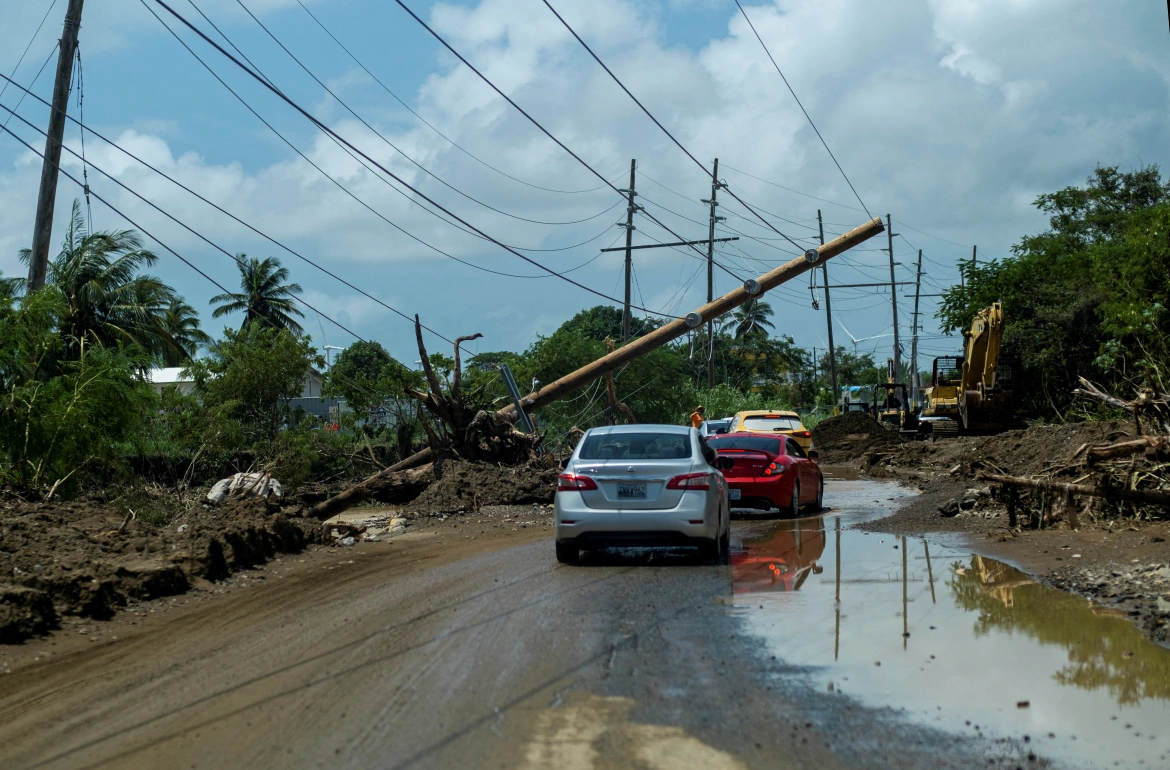
San Juan, September 23 (RHC)-- Hurricane Fiona is on track to menace Bermuda and far-eastern Canada after leaving hundreds of people stranded across Puerto Rico, where it smashed roads and bridges and caused historic flooding.
Government officials in the United States territory have been working with religious groups, nonprofits and others braving landslides, thick mud and broken asphalt by foot to provide food, water and medicine for people in need. But they are under pressure to clear a path so vehicles can enter isolated areas soon.
Nino Correa, commissioner for Puerto Rico’s emergency management agency, estimated that at least six municipalities across the island had areas that were cut off by Fiona, which struck as a Category 1 hurricane. It was of up to Category 4 power on Thursday as it headed towards Bermuda.
Manuel Veguilla said he has been unable to leave his neighbourhood in the northern mountain town of Caguas since Fiona swept in on Sunday. “We are all isolated,” Veguilla said, adding that he worries about elderly neighbours, including his older brother who does not have the strength for the long walk it takes to reach the closest community.
Veguilla heard that municipal officials might open a pathway on Thursday, but he doubted that would happen because large rocks covered a nearby bridge and the 3-metre (10-foot) space beneath it.
Neighbours have shared food and water dropped off by nonprofit groups, and the son of an elderly woman was able to bring back basic supplies by foot on Wednesday, he said. Veguilla said in the aftermath of Hurricane Maria, a Category 4 storm that struck five years ago and resulted in nearly 3,000 deaths, he and others used picks and shovels to clear the debris. But Fiona was different, unleashing huge landslides. “I cannot throw those rocks over my shoulder,” he said.
Like hundreds of thousands of other Puerto Ricans after Fiona, Veguilla had no water or electricity service, but he said there is a natural water source nearby. Fiona sparked an island-wide blackout when it hit Puerto Rico’s southwest region, which is still recovering from a series of strong earthquakes in recent years.
Some 62 percent of 1.47 million customers remained without power on Thursday, four days after the hurricane, amid an extreme heat alert issued by the National Weather Service. Approximately 36 percent of customers, or nearly half a million, did not have water service.
The U.S. Federal Emergency Management Agency (FEMA) has sent hundreds of additional personnel to help local officials as the federal government approved a major disaster declaration and announced a public health emergency on the island.
Neither local nor federal government officials had provided any overall damage estimates from the hurricane, which dropped up to 760 mm (30 inches) of rain in some areas. More than 470 people and 48 pets remained in shelters.

